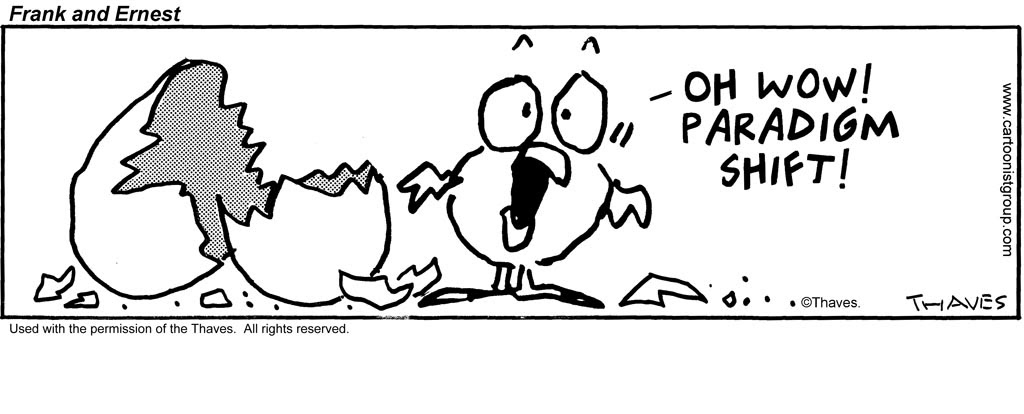Men and women really are profoundly different, as we see so clearly in the last post of this four-part series.
Men and Women Have Different Hormones
Hormones may be called the “communicators” of the body. They allow interaction between organ systems and body tissues, helping to regulate our physiology and behavior.
Two of the major hormones related to human sexuality are testosterone and estrogen. Testosterone drives the male body while estrogen directs female development and activity. Johnson explains:
Males begin producing gonadal testosterone at about the sixth or seventh week of gestation. This has an immediate effect on all of the organ systems, such that heart rate, respiratory rate, red blood cell counts, and brain structure are already sexually divergent at birth. The male testosterone level is two to three times that of the female until puberty, at which time it becomes, on the average, fifteen times higher than that of a female. Females produce about twice the estrogen of males prior to puberty and eight to ten times the estrogen after puberty.
Not only is the male and female anatomy different, the unseen communicators of human sexuality are radically different. These hormonal differences influence the sexual distinctions in all the organ systems in the body.
Peripheral Nervous System
The nervous system is divided into two parts. The central nervous system, comprised of the brain and spinal column and the peripheral nervous system, which connects the limbs and organs to the central nervous system, relaying information such as sight, sound, touch, taste and smell. Johnson states that the typical woman has “a more acute sense of touch,” but that’s not all.
 Females, likewise, have a more acute sense of hearing, smell, and taste. It has been argued that females are generally more perceptive and aware of context. … Such a system would give women an advantage in child care and social interaction.
Females, likewise, have a more acute sense of hearing, smell, and taste. It has been argued that females are generally more perceptive and aware of context. … Such a system would give women an advantage in child care and social interaction.
When Marilyn and I were parenting young children, she would inevitably hear the children in the night long before I would. I might be oblivious to a child’s need while she would sense the need and respond quickly. Much of this was the natural work of Marilyn’s acute peripheral nervous system.
Limbic System
Johnson writes about the limbic system, the seat of emotions and energy.
The thresholds to set off responses in the limbic system differ between males and females.
Maternal aggression [is] described as females responding to impending danger or harm to their offspring …. This response … is particularly strong during lactation …. It may also facilitate maternal instincts and bonding. This may explain why mothers are often more protective and aggressive in intervening on a child’s behalf than fathers. The baby’s cries trigger involuntary responses in the mother such as oxytocin secretion, nipple erection, and pupil dilation. There are no such responses in males, and male bonding is likely a learned response.
Former Alaska Governor Sarah Palin famously characterized this maternal response as “the mother grizzly.”
Dr. Johnson’s paper, “The Biological Basis for Gender-Specific Behavior,” is available here.
The Brain, Different in Men and Women
The brain is another organ that reveals significant distinctions between female and male.
Dr. Larry Summers, president of Harvard University, was forced to resign after making innocuous remarks on this subject at a private conference. He argued that boys outperform girls on high school science and math scores because of genetic differences. “Research in behavioral genetics is showing that things people previously attributed to socialization weren’t due to socialization after all,” he told the Boston Globe. These observations became the catalyst for his firing. While his comments were politically incorrect, they were accurate nevertheless.
Bruce Goldman, science writer at Stanford University school of medicine, writes of the discoveries of distinct brain functions between men and women.
But over the past 15 years or so, there’s been a sea change as new technologies have generated a growing pile of evidence that there are inherent differences in how men’s and women’s brains are wired and how they work.
He then goes on to give examples:
Women excel in several measures of verbal ability — pretty much all of them, except for verbal analogies. Women’s reading comprehension and writing ability consistently exceed that of men, on average. They outperform men in tests of fine-motor coordination and perceptual speed. They’re more adept at retrieving information from long-term memory.
Men, on average, can more easily juggle items in working memory. They have superior visuospatial skills: They’re better at visualizing what happens when a complicated two- or three-dimensional shape is rotated in space, at correctly determining angles from the horizontal, at tracking moving objects and at aiming projectiles.
The brain is a sex-typed organ
Goldman says, “The neuroscience literature shows that the human brain is a sex-typed organ with distinct anatomical differences in neural structures and accompanying physiological differences in function.”
Go here to read Goldman’s paper.
Part of the distinction between men’s and women’s brains is the issue of “white matter” and “grey matter.” White matter is used for integrating and assimilating information. Women generally have 10 times more white matter than men. Gray matter, on the other hand, is used for information processing, the kind of rational process used in math and science. Generally, men have 6.5 times more gray matter than women. Neuroimaging reveals these distinctions.
Each sex has its own way of knowing. Female knowing tends to come more through artistic means, through internalization, a focus on meaning and intuition. Male knowing, on the other hand, is usually geared to scientific dimensions, externalization, and a focus on facts and reason.
These two ways of knowing are equally valid, as well as complementary. Together, they lead to comprehensive and integrative understanding. Eliminate or diminish one or the other and the whole is enfeebled. Again, these are patterns are not absolutes. Men are capable of intuition though they are typically gifted in reasoning. Women are capable of reasoning yet more inclined to use intuition.
Attempts to alter gender are a rage against given reality
 In summary, our human sexuality is rooted in reality, design and purpose. The differences between female and male are real, not illusory, they are comprehensive and not trivial, complementary and not competitive. They are not meant to stand alone.
In summary, our human sexuality is rooted in reality, design and purpose. The differences between female and male are real, not illusory, they are comprehensive and not trivial, complementary and not competitive. They are not meant to stand alone.
To advocate for gender change and transgender surgery is to rage against reality and miss the wonder of our sexual identity and purpose as male and female. Transgender surgery cannot change one’s sexual identity, it can only disfigure or remove one’s sexual organs. Those who advocate these things exchange the wonder and profound comprehensiveness of human sexuality for a flat earth view of gender.
Dr. Wayne Grudem speaks of the wonder of our complementary existence as men and women:
From the beginning God designed our sexuality so that it reflects unity and differences and beauty all at the same time. As husband and wife, we are most attracted to the parts of each other that are the most different. Our deepest unity – physical and emotional and spiritual unity – comes at the point where we are most different.
Let us enjoy and celebrate the differences between men and women. Our complementary natures provide for a glorious life. The distinctions manifest in the fundamental principle of individuality are glorious in that they establish the absolute uniqueness of each individual, for the one-of-a-kind role to be played in the unfolding of God’s eternal purposes.
- Darrow Miller






